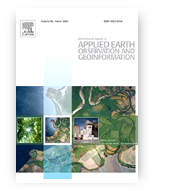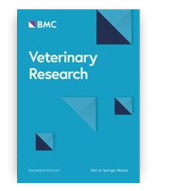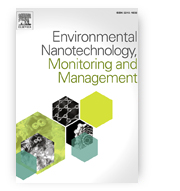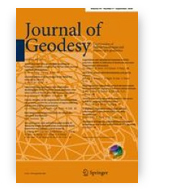Tree extraction and estimation of walnut structure parameters using airborne LiDAR data
J. Estornell, E. Hadaś, J. Martí, I. López-Cortés
International Journal of Applied Earth Observation and Geoinformation
 The development of new tools based on remote sensing data in agriculture contributes to cost reduction, increased production, and greater profitability. Airborne LiDAR (Light Detection and Ranging) data show a significant potential for geometrically characterizing tree plantations. This study aims to develop a methodology to extract walnut (Juglans regia L.) crowns under leafless conditions using airborne LiDAR data. An original approach based on the alpha-shape algorithm, identification of local maxima, and k-means algorithms is developed to extract the crowns of walnut trees in a plot located in Viver (Eastern Spain) with 192 trees. In addition, stem diameter and volume, crown diameter, total height, and crown height were estimated from cloud metrics and other 2D parameters such as crown area, and diameter derived from LiDAR data. A correct identification was made of 178 trees (92.7%). For structure parameters, the most accurate results were obtained for crown diameter, stem diameter, and stem volume with coefficient of determination values (R2) equal to 0.95, 0.87 and 0.83; and RMSE values of 0.43 m (5.70%), 0.02 m (9.35%) and 0.016 m3 (21.55%), respectively. The models that gave the lowest R2 values were 0.69 for total height and 0.70 for crown height, with RMSE values of 0.84 m (12.4%) and 0.83 m (14.5%), respectively. A suitable definition of the central and lower parts of tree canopies was observed. Results of this study generate valuable information, which can be applied for improving the management of walnut plantations.
The development of new tools based on remote sensing data in agriculture contributes to cost reduction, increased production, and greater profitability. Airborne LiDAR (Light Detection and Ranging) data show a significant potential for geometrically characterizing tree plantations. This study aims to develop a methodology to extract walnut (Juglans regia L.) crowns under leafless conditions using airborne LiDAR data. An original approach based on the alpha-shape algorithm, identification of local maxima, and k-means algorithms is developed to extract the crowns of walnut trees in a plot located in Viver (Eastern Spain) with 192 trees. In addition, stem diameter and volume, crown diameter, total height, and crown height were estimated from cloud metrics and other 2D parameters such as crown area, and diameter derived from LiDAR data. A correct identification was made of 178 trees (92.7%). For structure parameters, the most accurate results were obtained for crown diameter, stem diameter, and stem volume with coefficient of determination values (R2) equal to 0.95, 0.87 and 0.83; and RMSE values of 0.43 m (5.70%), 0.02 m (9.35%) and 0.016 m3 (21.55%), respectively. The models that gave the lowest R2 values were 0.69 for total height and 0.70 for crown height, with RMSE values of 0.84 m (12.4%) and 0.83 m (14.5%), respectively. A suitable definition of the central and lower parts of tree canopies was observed. Results of this study generate valuable information, which can be applied for improving the management of walnut plantations.
10.1016/j.jag.2020.102273
Impact of selected environmental factors on microbiome of the digestive tract of ruminants
Paulina Cholewińska, Wanda Górniak, Konrad Wojnarowski
Environmental Nanotechnology, Monitoring and Management
 Ruminants are an important part of world animal production. The main factors affecting their production rates are age, diet, physiological condition and welfare. Disorders related to low level of welfare can significantly affect the microbiological composition of the digestive system, which is essential to maintain high production rates. The microbiology of the ruminant gastrointestinal tract may be significantly affected by inappropriate keeping system (especially in juveniles), psychological stress (e.g. transport), or heat stress. This results in an increased risk of metabolic diseases, reduced fertility and systemic diseases. Therefore, the paper focuses on selected disorders i.e., aforementioned inappropriate maintenance system, psychological stress, heat stress and their effects on the microbiome of the digestive system.
Ruminants are an important part of world animal production. The main factors affecting their production rates are age, diet, physiological condition and welfare. Disorders related to low level of welfare can significantly affect the microbiological composition of the digestive system, which is essential to maintain high production rates. The microbiology of the ruminant gastrointestinal tract may be significantly affected by inappropriate keeping system (especially in juveniles), psychological stress (e.g. transport), or heat stress. This results in an increased risk of metabolic diseases, reduced fertility and systemic diseases. Therefore, the paper focuses on selected disorders i.e., aforementioned inappropriate maintenance system, psychological stress, heat stress and their effects on the microbiome of the digestive system.
10.1186/s12917-021-02742-y
Evaluation of the aquatic environment quality of the three rivers of Western Pomerania
Magdalena Senze, Monika Kowalska-Góralska, Katarzyna Czyż
Environmental Nanotechnology, Monitoring and Management
 An assessment of the environmental quality of the three rivers of Pomerania - Czerwona, Grabowa and Wieprza - was carried out in the years 2008–2013 on the basis of water and aquatic plants analyses performed in summer along the entire length of the river. The basic chemical composition of water, metals content in water and plants was determined, and MPI and BCF were calculated. Depending on the river, the lowest amounts of cadmium and lead and the highest amounts of nickel and zinc were found in the water. In plants, regardless of the river, there was definitely the least amount of cadmium and the most zinc. Bioaccumulation (BCF) of metals was the highest in the Grabowa river and the lowest in the Wieprza, only for lead, the highest value was found in the Czerwona and the lowest in the Grabowa. The MPI for water and plants was the lowest in the Grabowa river, and the highest in the Wieprza for water and in the Czerwona for plants. It was found that the quality of rivers is similar to that of many Polish rivers, regardless of their location, and the greatest influence has the river size, flow, and pollution present in the catchment area - the Czerwona river was the most different in this respect from the other two.
An assessment of the environmental quality of the three rivers of Pomerania - Czerwona, Grabowa and Wieprza - was carried out in the years 2008–2013 on the basis of water and aquatic plants analyses performed in summer along the entire length of the river. The basic chemical composition of water, metals content in water and plants was determined, and MPI and BCF were calculated. Depending on the river, the lowest amounts of cadmium and lead and the highest amounts of nickel and zinc were found in the water. In plants, regardless of the river, there was definitely the least amount of cadmium and the most zinc. Bioaccumulation (BCF) of metals was the highest in the Grabowa river and the lowest in the Wieprza, only for lead, the highest value was found in the Czerwona and the lowest in the Grabowa. The MPI for water and plants was the lowest in the Grabowa river, and the highest in the Wieprza for water and in the Czerwona for plants. It was found that the quality of rivers is similar to that of many Polish rivers, regardless of their location, and the greatest influence has the river size, flow, and pollution present in the catchment area - the Czerwona river was the most different in this respect from the other two.
10.1016/j.enmm.2020.100420
Approach to leveraging real-time GNSS tomography usage
A. Sá, W. Rohm, R.M. Fernandes, E. Trzcina, M. Bos, F. Bento
Journal of Geodesy
 The signal of the GNSS satellites can be used to estimate the amount of water vapor in the atmosphere. For this reason, GNSS observations are nowadays routinely used by several meteorological institutes (e.g., MetOffice, Meteo France) to monitor weather events and to improve their weather forecasts quality. The analysis of a whole network of GNSS stations to estimate a full three-dimensional model of the water vapor content is a challenging and computationally demanding task. For this purpose, a tomographic system SEGAL GNSS Water Vapour Reconstruction Image Software (SWART) was developed and tested. The new method makes use of parallelized algebraic reconstruction techniques (ARTs) and supersedes other implementations in terms of speed by at least 50% for small networks. For SWART, the computation time grows linearly with the number of observations. As a result, the new method makes possible to estimate the water vapor for larger GNSS networks and can be used for near-real-time weather predictions. To show its potential, data from 26 stations in Poland were analyzed using data from a period of 56 days. Good agreement in the estimated water vapor between SWART and radiosondes solutions was obtained, with a mean RMS of 1.5 g/m3 for the lower layers and an overall improvement of 5% until the layer 6750 m when compared with the atmospheric model (WRF). Furthermore, rapid and strong variations observed by radiosondes were not modeled by the WRF but were detected by GPS tomography.
The signal of the GNSS satellites can be used to estimate the amount of water vapor in the atmosphere. For this reason, GNSS observations are nowadays routinely used by several meteorological institutes (e.g., MetOffice, Meteo France) to monitor weather events and to improve their weather forecasts quality. The analysis of a whole network of GNSS stations to estimate a full three-dimensional model of the water vapor content is a challenging and computationally demanding task. For this purpose, a tomographic system SEGAL GNSS Water Vapour Reconstruction Image Software (SWART) was developed and tested. The new method makes use of parallelized algebraic reconstruction techniques (ARTs) and supersedes other implementations in terms of speed by at least 50% for small networks. For SWART, the computation time grows linearly with the number of observations. As a result, the new method makes possible to estimate the water vapor for larger GNSS networks and can be used for near-real-time weather predictions. To show its potential, data from 26 stations in Poland were analyzed using data from a period of 56 days. Good agreement in the estimated water vapor between SWART and radiosondes solutions was obtained, with a mean RMS of 1.5 g/m3 for the lower layers and an overall improvement of 5% until the layer 6750 m when compared with the atmospheric model (WRF). Furthermore, rapid and strong variations observed by radiosondes were not modeled by the WRF but were detected by GPS tomography.
10.1007/s00190-020-01464-7









